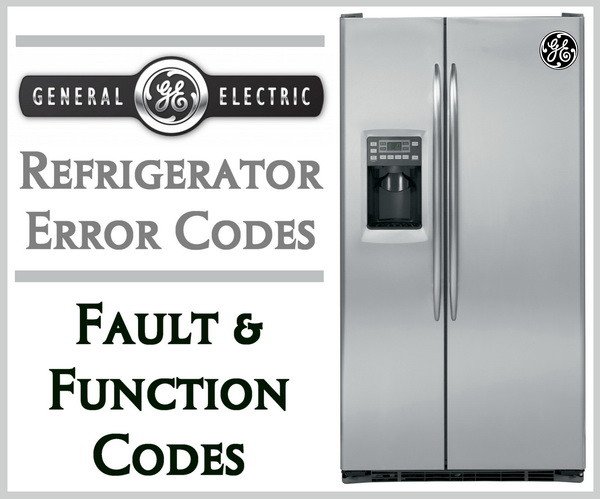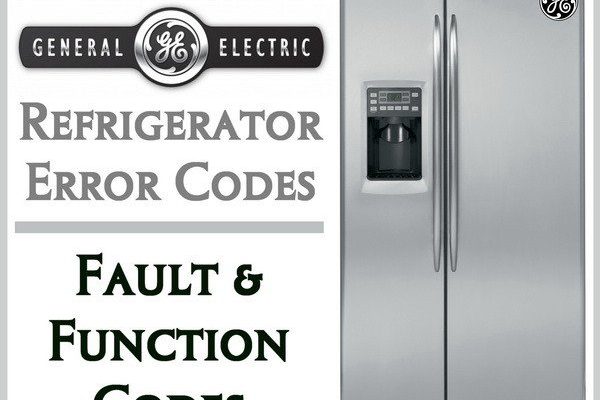
The OE error code on a GE refrigerator is not as daunting as it seems. It signals an issue with the refrigerator’s cooling and defrosting system, which is crucial for maintaining the proper temperature. When this code pops up, it’s like your fridge is saying, “Hey, buddy, something’s up with my cooling!” This error, if left unchecked, could lead to thawing ice cream or warm milk — not the ideal scenario, right? Let’s unravel what might be causing this error and how you can potentially solve it.
Understanding the OE Error Code
The OE error code is a common alert for GE refrigerators, pointing specifically to a problem within the cooling or defrosting mechanisms. Imagine your refrigerator as a mini weather system. Just like how clouds modulate rain, the cooling system regulates the internal climate of your fridge. Now, if something disrupts this system, it’s like a sudden weather change — hence, the OE code.
This error code usually indicates that the evaporator fan inside the refrigerator has stopped working correctly. The evaporator fan is essential because it circulates cold air throughout the interior, ensuring everything stays at the right temperature. When it fails, the air doesn’t move around like it should, and certain parts of the fridge start warming up. It’s the equivalent of turning off a ceiling fan on a hot day — suddenly, things start feeling uncomfortable.
Another possibility could be related to the defrost system. If the defrost heater isn’t functioning, ice can build up around the evaporator coils. Think of this like frost covering your window on a cold morning — it obstructs the view (or airflow), and before you know it, everything inside the fridge starts warming up. Thus, understanding this error means keeping an eye on these components.
Common Causes of the OE Error Code
So, what exactly causes this OE error to appear on your GE refrigerator? One of the primary culprits could be a malfunctioning evaporator fan motor. Over time, like any motor, wear and tear can take its toll. If the motor stops working, it’s like trying to cool a room with a broken fan — ineffective to say the least.
Another cause might be issues with the refrigerator’s defrost thermostat. This small but mighty part senses the temperature of the evaporator coils. If it fails, the defrost cycle may not kick in, leading to ice accumulation. Imagine a thermostat in your home refusing to acknowledge the cold, leaving you shivering — the stakes are similar for your refrigerator.
A clogged defrost drain could also trigger the OE code. When the defrost cycle runs, it melts ice and frost, and the water needs somewhere to go. If the drain is blocked, water can back up and refreeze, impacting the cooling process. It’s like a blocked sink in your kitchen — eventually, it’ll cause quite the mess if not attended to.
How to Troubleshoot and Fix the OE Error Code
Now that you’re aware of potential causes, let’s explore how to troubleshoot this pesky OE error. First, examine the evaporator fan motor. This might require you to unplug the fridge and take a peek behind a few panels. If the fan blades aren’t spinning freely, it could mean the motor is shot and needs replacing. It’s always best to call a professional if you’re not comfortable digging into the appliance yourself — safety first!
Next, check the defrost thermostat. You might need a multimeter for this, a handy tool for checking electrical circuits. If it shows no continuity at temperatures below 32°F, you’ve found the issue. Replacing it can restore order in your fridge’s universe.
Don’t forget to check the defrost drain. If it’s blocked, try flushing it with hot water using a turkey baster. This could be all it takes to clear the path, letting the water run freely again. Keeping this drain clear can prevent the issue from recurring, much like keeping gutters clean to avoid water damage to your house.
Preventive Measures and Final Thoughts
To keep the OE error at bay, regular maintenance is key. Ensure your refrigerator is positioned correctly with adequate airflow around it. This simple step can increase its efficiency and lifespan. Periodically check and clean components like fans and drains to prevent future headaches.
The same way you wouldn’t ignore strange noises from your car, don’t overlook error codes on your refrigerator. These signals are there to alert you to potential issues before they become major problems. By understanding and acting on these warnings, you can ensure that your refrigerator remains a reliable partner in your kitchen adventures.
In conclusion, while the OE error code might seem intimidating at first, with a little investigation and effort, you can both diagnose and fix the problem. Keeping your refrigerator running smoothly means your food stays fresh, your drinks stay cold, and your appliance remains trouble-free for years to come.
